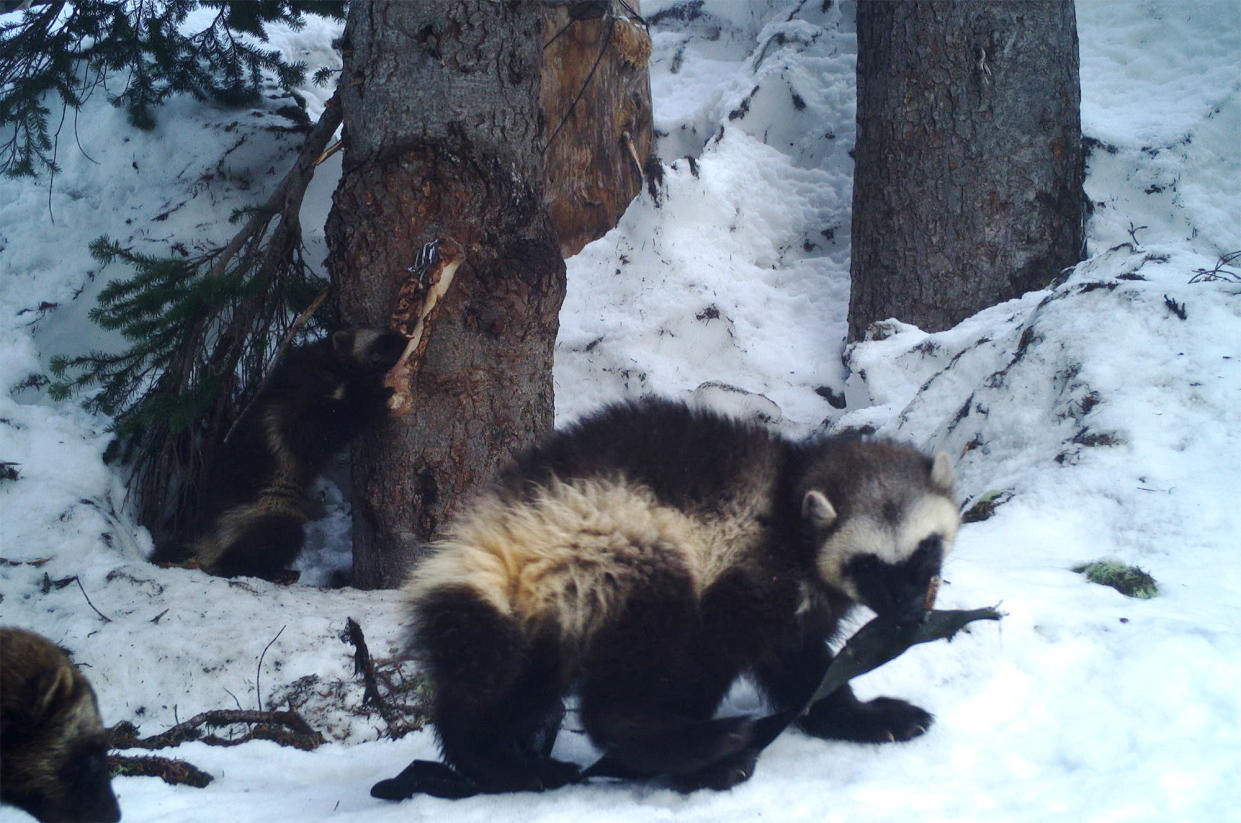Yosemite wolverine is second one spotted in California in nearly 100 years

Spring sightings of a mystery critter in the Eastern Sierra Nevada Mountains have been confirmed by California wildlife officials as most likely a single, rare wolverine.
The news, revealed Thursday by the California Department of Fish and Wildlife, describes the second time such a mammal has been spotted in the California wild in nearly 100 years.
"These latest detections are exciting," senior environmental scientist Daniel Gammons of Fish and Wildlife said in a statement.
The sightings last month include two in the Inyo National Forest and one in Yosemite National Park, the department said in a statement. Images and video submitted to state wildlife officials were analyzed for telltale attributes such as size, proportion and movement and then confirmed, the agency said.
Though some of the locations are far apart, wolverines are known to travel 15 miles a day seeking food, experts say. The discoveries last month follow a wave of sightings of what was believed to be the same wolverine from the mid-2000s to 2018.
Experts believe the two sighting clusters this century traced two separate animals because they typically live for only a dozen years or so. The last confirmed sightings in California were in the 1920s, the Department of Fish and Wildlife said.
The news follows similar discoveries in Washington state, where in 2020 the National Park Service announced the first sighting of a wolverine mother and her offspring, two "kits," in Mount Rainier National Park in more than a century's time.
The next year the park service said a second litter of wolverine young was born in Mount Rainier National Park.
The animals, members of the weasel family that otherwise resemble small bears who stay close to the ground when they're not climbing trees, may have largely been killed off and chased away in California and other parts of the lower 48 by unregulated trapping and overzealous predator control.
National Park Service officials have said there are probably 300 to 1,000 wolverines in the lower 48. Their declining American population has made the animals candidates for protection under the federal Endangered Species Act.
In California, they're listed as a threatened species under the state's Endangered Species Act, affording them legal protection from being taken, exported or sold.
Wolverines have thrived in Canada and Alaska. It's not entirely clear why they may be making a comeback in points south. In 2021, Mount Rainier National Park Superintendent Greg Dudgeon said the sightings there were a sign that the park's environment was healthy.
"It helps us confirm that the park’s wilderness is excellent habitat for wolverines, and that protection of these wild areas is important to the success of many species of wildlife," he said in a statement.
It's also possible that record winter snowfall in the Sierra Nevada may have helped the long-distance travelers cross rivers and other boundaries while providing a habitat attractive to would-be wolverine families.
The National Park Service notes that birth happens in excavated snow dens. "Almost all verified wolverine dens are under three to twenty-five feet of snow and their snow tunnels may last until mid-May," it said in a white paper on wolverines and climate change in 2012.
The state Department of Fish and Wildlife hopes to track the latest wolverine by collecting hair and scat and analyzing more photos and video from those rare Californians who have seen the mammals in the wild.
This article was originally published on NBCNews.com

